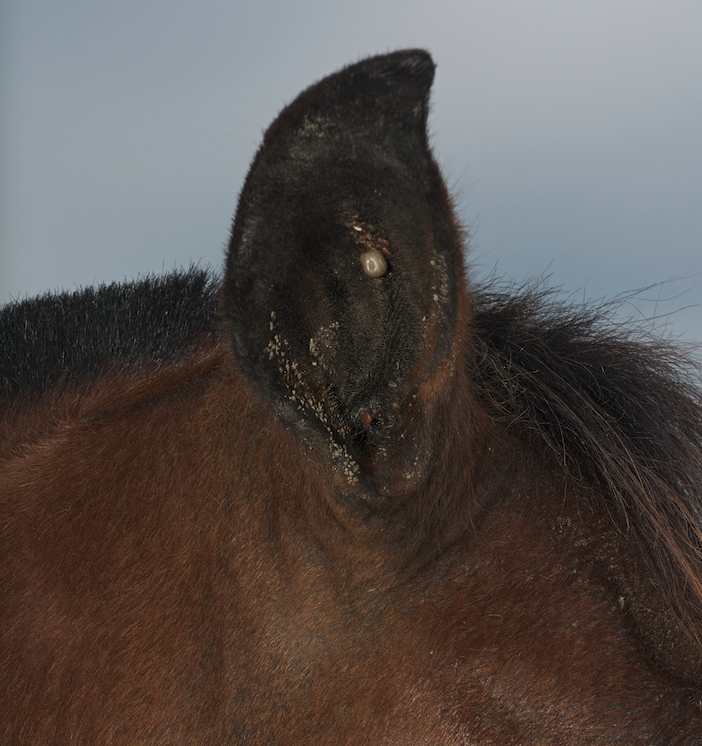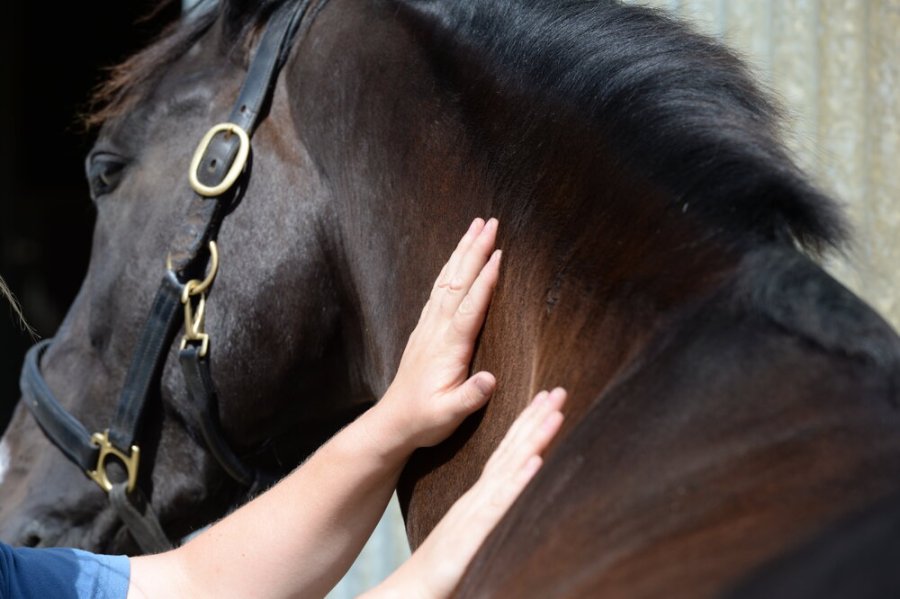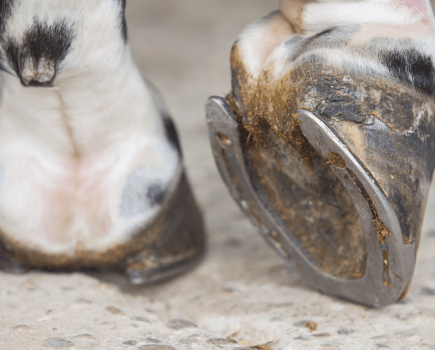Ticks are small arachnids (the same class as spiders) and they undergo four phases in their life cycle: egg, larvae, nymphs, and adult. The tick requires blood meals to develop between these phases.
After the nymph stage, ticks develop into either male or female adults. Female ticks will need blood meals before they start to lay eggs, while male ticks don’t suck blood.
Ticks can spread disease, usually in the nymph stage of their life cycle and, if female, before they lay their eggs.
Tick larvae will also seek blood meals but will not transmit pathogens. It is these pathogens that poisons or irritates its host and can negatively affect horse health.
How ticks operate

Horses are vulnerable to ticks, which attach to the skin and suck blood
You will normally find ticks in wet environments, on grass or in low bushes, especially from March to June, and then again from August to November. However, there is a very significant risk of horses (and people) picking them up all year round.
Other animals are prone to picking up ticks too — including family pets, like cats and dogs — as they spend a lot of time roaming in grass. It is important a tick is removed from their body promptly as well.
The tick is blind but will feel vibrations, body heat, and carbon dioxide from one’s breath. If it finds you, the tick will crawl onto its host.
The tick will choose its host based on its size. Larvae will normally seek out small birds and mice, while nymphs will attach to rabbits, cats, and dogs, and the female ticks prefer larger animals, like horses.
Its host’s size is very important for the tick’s development. If the host is too small, there will not be enough blood and the tick will struggle to survive.
Once the tick has attached itself to a host, it will feed, during which it might transmit pathogens.
This can cause skin irritation, bacterial skin infections, and small abscesses. In severe cases, especially in ponies and foals, a tick may even cause anaemia.
Ticks on horses: prevention tips
Tick prevention requires diligence: you must constantly check for ticks and, if found, quickly remove them.
Application of tick-specific repellents is also key. These should be applied to your horse’s mane, tail, head, chest, and underbelly before riding or turning your horse out on pasture.
When your horse is back in their stable, make sure you check their whole body for ticks thoroughly.
Ticks are easier to feel than see, so run your hands through their mane, tail, and across their body, feeling for small bumps along the way, being careful not to damage or dislodge them by accident.
How to remove a tick from a horse
If a tick attaches itself to your horse, you will need to remove it as soon as possible by doing the following:
- Decide if you are confident to remove the tick yourself, or if you need assistance from your vet.
- Wear latex gloves and use a tick fork.
- A tick attaches itself to the skin by screwing barbed mouthparts into the skin. Therefore, it is very important that the tick is removed using an un-screwing technique.
- If you haven’t got a tick fork, use fine-point tweezers to gently grasp and twist the head of the tick.
- Avoid grasping the body of the tick as this will cause it to regurgitate its stomach and salivary gland contents into the skin, increasing the risk of pathogen transmission.
- If a tick is removed with a straight pulling motion or dislodges by accident, the mouthparts may be left behind in the skin and cause localised inflammation and infection.
- After the tick is removed and killed, clean the area with a mild antiseptic solution or saltwater.
- If the area looks infected or irritated (red or swollen), you should contact your vet.
- Should you find ticks around your horse’s ears, call a vet for advice about removing the tick, as safe removal may be difficult in this sensitive area.
What to do with the tick
After you have detached a tick, ideally it should be sent in a crush-proof container to Public Health England for identification. This information is used to identify potential tick-borne diseases that may pass to animals or humans. A submission form can be found here.
Alternatively, drop the detached tick in a small jar of alcohol to kill it, or flush it down the loo.
Never apply Vaseline, chemicals, or freeze/burn a tick that has attached to a horse’s body, as this may stimulate it to regurgitate its saliva and stomach contents, increasing the risk of infection.
Ticks on people: lyme disease
Lyme disease is a bacterial infection that can be spread to people by infected ticks. A circular or oval-shaped rash around a tick bite is an early symptom.
Not all ticks carry lyme disease, but it is still important to check for ticks after being in your garden or in grass and remove them. Lyme disease can be difficult to diagnose and the symptoms in some people can be lengthy and debilitating.
Read the NHS advice about lyme disease and ticks on people here.
Main image: copyright Your Horse Library/Kelsey Media Ltd. Inset image: copyright Shutterstock








